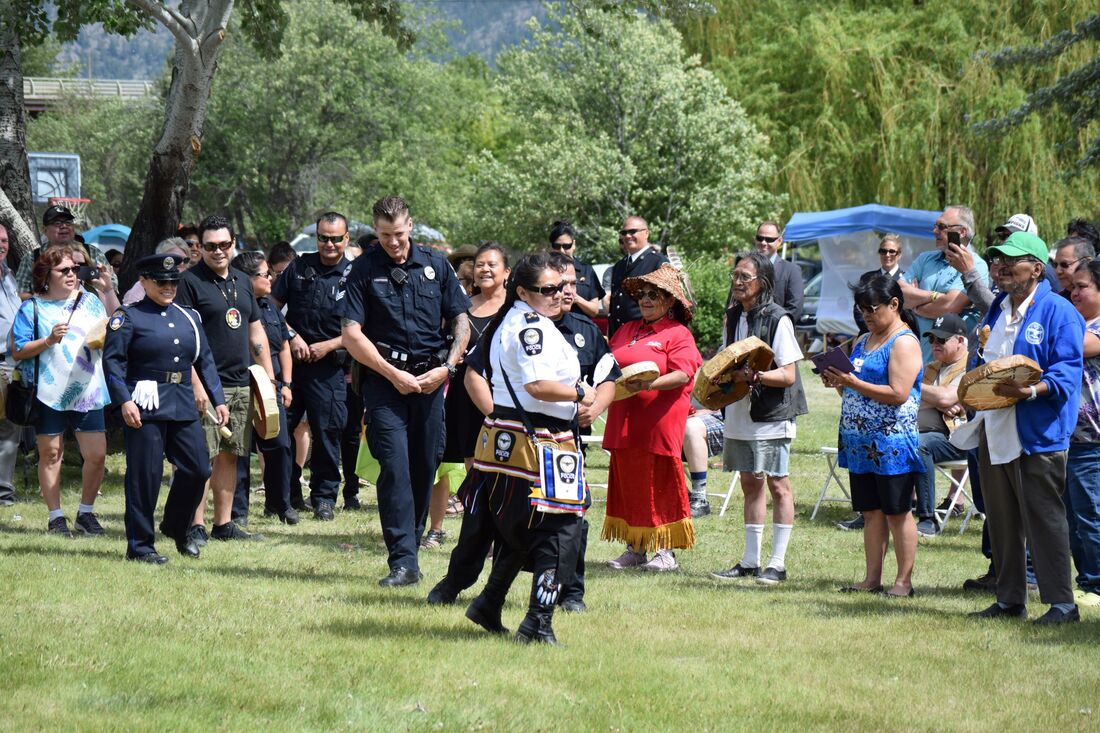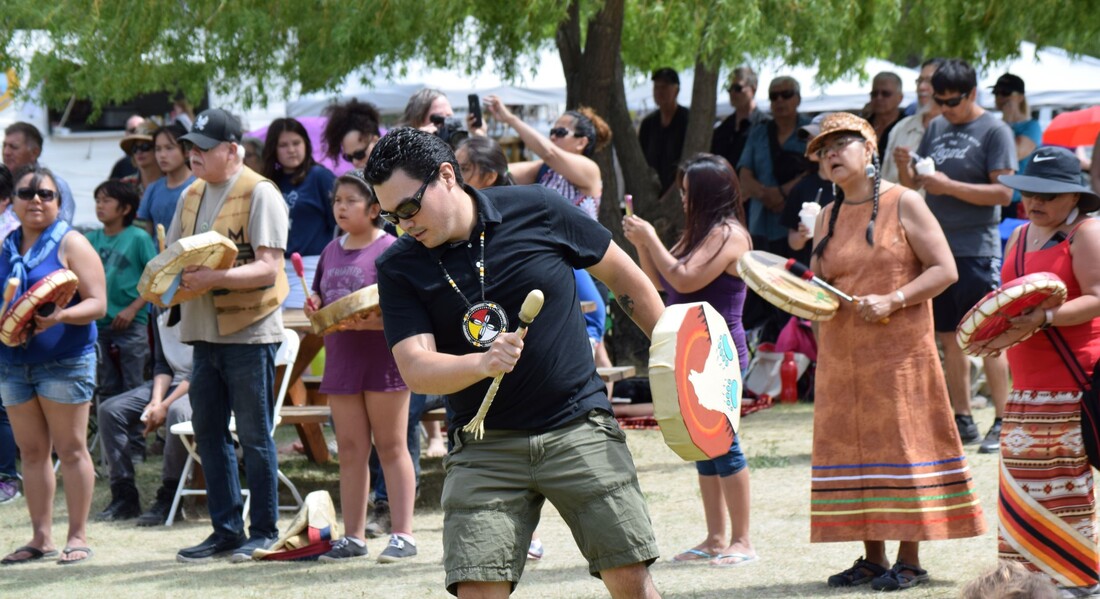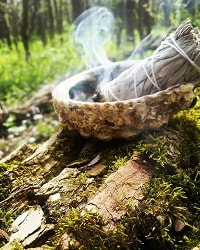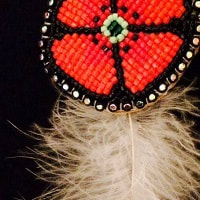For an in-depth look at the language, please visit:
Southern St'at'imc Dialect - go to: www.firstvoices.com and choose English. Then, under the "Choose a Language" dropdown menu, choose Lil'wat.
Northern St'at'imc Dialect - go to www.firstvoices.com and choose English. Then, under the "Choose a Language" dropdown menu, choose Northern St'at'imcets.
*In the above links punctuation has been removed in order for the words to display the same on everyone's screen.
Southern St'at'imc Dialect - go to: www.firstvoices.com and choose English. Then, under the "Choose a Language" dropdown menu, choose Lil'wat.
Northern St'at'imc Dialect - go to www.firstvoices.com and choose English. Then, under the "Choose a Language" dropdown menu, choose Northern St'at'imcets.
*In the above links punctuation has been removed in order for the words to display the same on everyone's screen.
|
A Smudge Ceremony is a form of spiritual cleansing, physical & spiritual protection and a form of prayer. The tools involved in this ceremony can vary, but the main tools are:
* Smudge bowl (can be a rock or shell) *Dried Traditional Herbs (Sage, Cedar, Sweet Grass, Juniper) *Lighter or Matches *Feather Some Smudge holders may drum and sing during this ceremony and some may not. The ceremony will begin once the smudge bowl is lit. Depending on the person leading the ceremony you may be smudged one at a time while standing, or you may have to smudge yourself (which may seem daunting if it's your first time). If you have to smudge yourself, just remember that there is no wrong way and there is no right way to smudge. Some tips for smudging yourself is to think of it as washing up. The point of smudging is to use the smoke from the smudge bowl to cleanse and protect yourself. Waft the smoke up towards your face, over your head, to your chest, over each shoulder, and down your legs. You can do more or less, it is up to you during the ceremony on how much or how little you smudge. Each smudge ceremony is unique and every smudge holder will have their own set of guidelines. Don't be afraid to ask them. Some people will not allow any form of recording during this ceremony. Make sure to ask before taking any pictures. Smudging is not just for people. You can smudge (or ask someone to smudge) your home, car, or any of your belongings. |
A Sweat Lodge Ceremony is a form of spiritual & physical cleansing, a form of spiritual & physical protection and a powerful form of prayer. The tools involved in a Sweat Lodge Ceremony (aka Sweat) are generally the same.
*A sacred fire *A Sweat Lodge *Medicinal Water *A Splashing bundle (fir or cedar boughs) *Heated Lava Rocks Just like Smudging, each Sweat Lodge Holder is unique and will have their own guidelines. The rocks will be heated in the sacred fire until they are white hot. You will be asked to make your way into the Sweat Lodge, and say "all my relations" when you enter or exit the lodge. Once inside the rocks will be removed from the fire and carried to the entrance of the lodge, and they will be brushed off with fir or cedar boughs and brought inside to the pit. Depending on the Sweat Lodge Holder, you will have at least four rocks for each round, with a total of four rounds. Each round represents something, and the Sweat Lodge Holder will tell you at the beginning of the round. Once the Sweat Lodge Holder begins splashing the medicinal water onto the rocks, the Sweat Lodge will heat up rapidly, and traditional singing and prayers will begin. During this time you should be praying in your own way. If you need to exit, say "door" or "all my relations". There is no shame in leaving the Sweat early (you can go back in once a new round starts). Once the round is complete, the Sweat Lodge Holder will open the door. This will continue for a total of four rounds. It is protocol to give the Sweat Lodge Holder tobacco (store bought or traditional tobacco - sage, cedar, sweet grass, juniper) and a gift when requesting a Sweat, or information from a Traditional Person. Tobacco is like a key from the spirit world and the person receiving the tobacco cannot refuse your request, as it is coming from the spirits. The gift is for the person accepting and completing your request. Some people will not allow any form of recording during this ceremony. Be sure to ask before taking pictures or recording. |
Name Giving Ceremonies are when someone receives their Ucwalmicwskwatsits (Indian Name/Traditional Name) by community recognition. The Ceremony may vary, as each Ceremony Holder will have their own guidelines, but generally the Ceremony will take place with the following people:
*Person handing down the name *Person receiving the name *At least four witnesses *The family of the person receiving the name *Family of the witnesses Some Name Givings may not be public but most are. The person handing down the name will be the one most knowledgeable about where the name came from (if from an ancestor or how the name was created) and will be able to tell the story of how the ceremony came to be. The person receiving the name will be present and will be required to give a speech. The witnesses are crucial to this ceremony. They are the people who will be responsible for the newly given name to live on. They will be responsible to spread the word of the name giving, and they will be required to call the person by their newly given Ucwalmicwskwatsits (Indian Name/Traditional Name). If a witness passes away, they must be replaced. Each witness must receive a tobacco tie/medicine bundle, and a gift. The family of the person receiving the name will be responsible for the care taking of the event (before and after) and will have to provide separate giveaway items for all in attendance (this can be in the form of a meal, or it can be items bought from a dollar store, or tobacco ties/medicine bundles). This is to thank the people who are witnessing this special event. The family of the witnesses will be welcomed to attend, and the general public may or may not be allowed to attend. If they are, then they too are witnesses, and must spread the word about the name giving, and their gift is the giveaway items (tobacco ties/medicine bundles or a meal). Speeches and drumming will follow. Pictures and recordings will be allowed, as this is a very celebrated event. |
Drumming & Dancing Ceremonies are also know as Pumaka7 muta7 Saquta. The style of singing and dancing is different from Powwow music. Hand drums are used and are made out of cedar frames and deer hides. The Saquta varies from person to person. Their dancing spirit will come out when the hand drumming starts.
The regalia for Saquta is different from Powwow as well. Buckskin vests and leggings are what some males wear along with weaved cedar headbands, and most females wear buckskin dresses with or without weaved cedar root headbands. Each regalia is decorated uniquely. Some dancers wear headdresses made from animals, such as Bears, Deer, and Wolves. These are obtained by recognition of the animal's spirit within the dancer by elders and spiritual people. There may be "coming out" ceremonies for dancers as well. This is for the dancer to "come out" and to let the physical and spiritual world know that they will be dancing, and that their dancing spirit will be out on the dance floor when requested. It is very similar to the name giving ceremony, except the fact that there will be no name given out during the "coming out" ceremony. Anyone can dance when there is drumming, and in the present day the most powerful form of dancing is when you dance in what you showed up to the event in. For an example of our traditional drumming and dancing, see the video below which has been created by the Tszil Learning Centre's Video Production students in Lil'wat (Mount Currie) B.C. Song & Dance of the Lil'wat People: Click here and click here. |
Southern STPS - Mount Currie DetachmentEmergency: 911 or 604-894-5757
Click here for non-emergency calls, office location and hours. |
Northern STPS - Lillooet DetachmentEmergency: 911 or 250-256-7767 or 1-877-919-7767
Click here for non-emergency calls, office location and hours. |
"Our force may be small, but we serve each day with honour and respect."
- Stl'atl'imx Tribal Police Service.
Official Website for the Stl'atl'imx Tribal Police Service | © 2024




